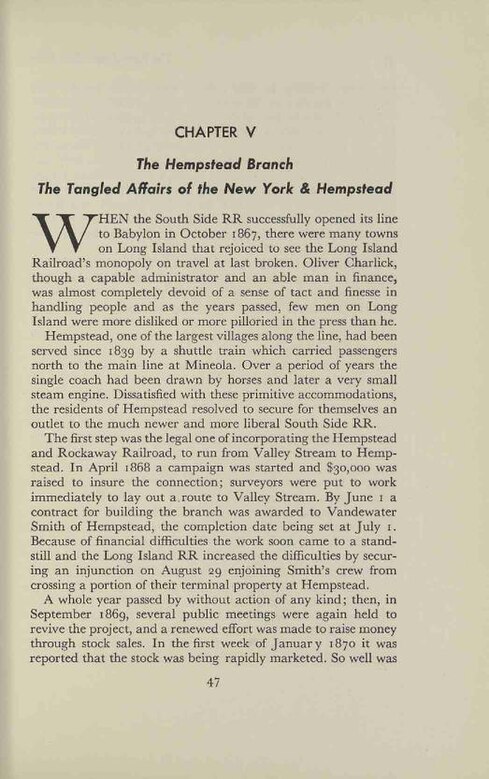CHAPTER V
The Hempstead Branch
The Tangled Affairs of the New York & Hempstead
WHEN the South Side RR successfully opened its line to Babylon in October 1867, there were many towns on Long Island that rejoiced to see the Long Island Railroad's monopoly on travel at last broken. Oliver Charlick, though a capable administrator and an able man in finance, was almost completely devoid of a sense of tact and finesse in handling people and as the years passed, few men on Long Island were more disliked or more pilloried in the press than he.
Hempstead, one of the largest villages along the line, had been served since 1839 by a shuttle train which carried passengers north to the main line at Mineola. Over a period of years the single coach had been drawn by horses and later a very small steam engine. Dissatisfied with these primitive accommodations, the residents of Hempstead resolved to secure for themselves an outlet to the much newer and more liberal South Side RR.
The first step was the legal one of incorporating the Hempstead and Rockaway Railroad, to run from Valley Stream to Hempstead. In April 1868 a campaign was started and $30,000 was raised to insure the connection; surveyors were put to work immediately to lay out a.route to Valley Stream. By June 1 a contract for building the branch was awarded to Vandewater Smith of Hempstead, the completion date being set at July 1. Because of financial difficulties the work soon came to a standstill and the Long Island RR increased the difficulties by securing an injunction on August 29 enjoining Smith's crew from crossing a portion of their terminal property at Hempstead.
A whole year passed by without action of any kind; then, in September 1869, several public meetings were again held to revive the project, and a renewed effort was made to raise money through stock sales. In the first week of January 1870 it was reported that the stock was being rapidly marketed. So well was
47
